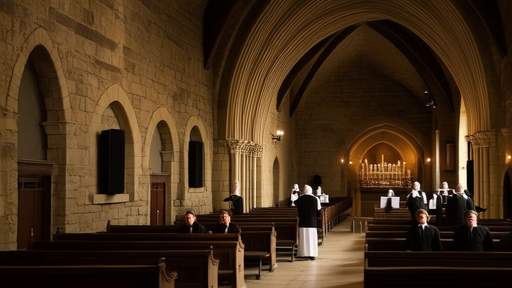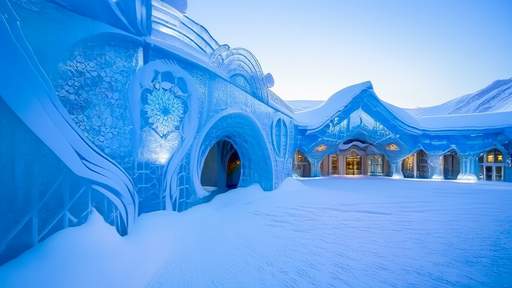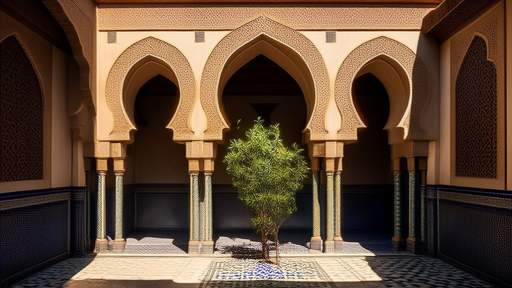Nestled within the stone walls of France's historic chateau hotels, one finds more than just opulent tapestries and antique furniture. Among the most captivating artifacts standing guard in these grand corridors are the medieval suits of armor – silent sentinels that whisper tales of knights and nobility. Unlike their static museum counterparts, these armored figures in working hotels require meticulous care to maintain their majestic presence while resisting the ravages of time.
The conservation of armor in active hospitality environments presents unique challenges. Humidity from daily cleaning, accidental contact from curious guests, and even vibrations from foot traffic can subtly degrade these metallic heirlooms. Chateau de Chambord's head conservator, Élodie Marchand, notes that "armor in hotels lives differently than in museums – it breathes with the building, reacts to seasonal changes, and sometimes even gets touched by overenthusiastic admirers." This dynamic existence demands a specialized approach to preservation.
Traditional methods developed for museum armor conservation often prove inadequate for hotel settings. The wax-based coatings favored by institutions would quickly dull under frequent dusting, while climate-controlled vitrines would destroy the immersive historical ambiance. Instead, French chateaux have pioneered hybrid techniques combining Renaissance-era recipes with modern nanotechnology. At Château de Pierrefonds, restorers use a 16th-century linseed oil formulation enhanced with microscopic ceramic particles to create a protective layer that withstands both humidity and accidental fingerprints.
Morning routines in these castle hotels include armor maintenance rituals as precise as they are poetic. Before dawn, stewards armed with ostrich feather dusters gently remove overnight accumulations without disturbing protective coatings. The hollow visors receive special attention – these cavities often collect dust that can accelerate corrosion. Jean-Luc Beaumont, head butler at Château de Chenonceau, describes the process as "a dance with history, where every gesture must honor both the artifact and the guests' experience."
Seasonal changes dictate different care regimens. Summer brings challenges from increased humidity and tourist traffic, requiring weekly inspections for early rust detection. Winter months, when many chateaux reduce public access, become opportunities for deeper conservation work. The armor at Château de Fontainebleau undergoes meticulous disassembly during this period, with each plate receiving individual attention from master metalsmiths using tools indistinguishable from those their medieval counterparts wielded.
Modern technology discreetly supports these ancient preservation techniques. Microclimate sensors hidden within armor joints monitor temperature and humidity fluctuations, alerting staff to potential danger before human senses can detect issues. At Château de Compiègne, lasers originally developed for aerospace applications now remove microscopic corrosion without damaging original surfaces – a process the conservators whimsically call "giving the knights a photon bath."
The human element remains irreplaceable in this delicate work. Generations of the same families often care for specific suits, passing down oral traditions of maintenance alongside official conservation protocols. Marie-Claire Duvall, whose family has tended the armor at Château de Vincennes since the 1890s, speaks of recognizing individual suits by their "breathing" – the subtle sounds metal makes as temperatures change throughout the day. This intimate knowledge allows for preemptive care no textbook could prescribe.
Guest interaction poses both challenges and opportunities for armor preservation. While touching is strictly prohibited, many chateaux have developed clever solutions to satisfy visitor curiosity without compromising conservation. Château de Blois stations docents near armor displays with replica pieces for tactile exploration, while Château d'Angers projects augmented reality visualizations showing how the suits would have moved and sounded when worn by their original owners.
The financial commitment to maintaining these metallic heirlooms is substantial. A single suit's annual conservation can exceed €15,000, factoring in specialized labor, materials, and environmental controls. Yet as Hôtel de Bourbon-Conde's managing director Antoine de Villiers explains, "These are not expenses but investments in time travel. When a child stands before armor that still carries the scent of linseed oil and ancient steel, we haven't preserved metal – we've preserved wonder."
Looking toward the future, French chateau hotels are collaborating with materials scientists to develop next-generation preservation methods. Self-healing nanocoatings that repair minor scratches, and alloys that change color when corrosion begins show promise for making armor conservation more sustainable. Yet even as technology advances, the essence remains unchanged – honoring these silent metallic witnesses to history through daily acts of meticulous care and respect.
For guests fortunate enough to encounter these maintained masterpieces, the effect transcends typical museum experiences. There's magic in seeing candlelight flicker across armor that still bears the subtle tool marks of its maker, or noticing how morning mist from open courtyard windows beads on properly oiled steel. In these moments, the careful preservation work becomes invisible, allowing the armor to fulfill its ultimate purpose – not as a relic behind glass, but as a living bridge to the age of chivalry.

By /Jun 5, 2025

By /Jun 5, 2025

By /Jun 5, 2025

By /Jun 5, 2025

By /Jun 5, 2025

By /Jun 5, 2025

By /Jun 5, 2025

By /Jun 5, 2025

By /Jun 5, 2025

By /Jun 5, 2025

By /Jun 5, 2025

By /Jun 5, 2025

By /Jun 5, 2025

By /Jun 5, 2025

By /Jun 5, 2025

By /Jun 5, 2025

By /Jun 5, 2025

By /Jun 5, 2025

By /Jun 5, 2025

By /Jun 5, 2025